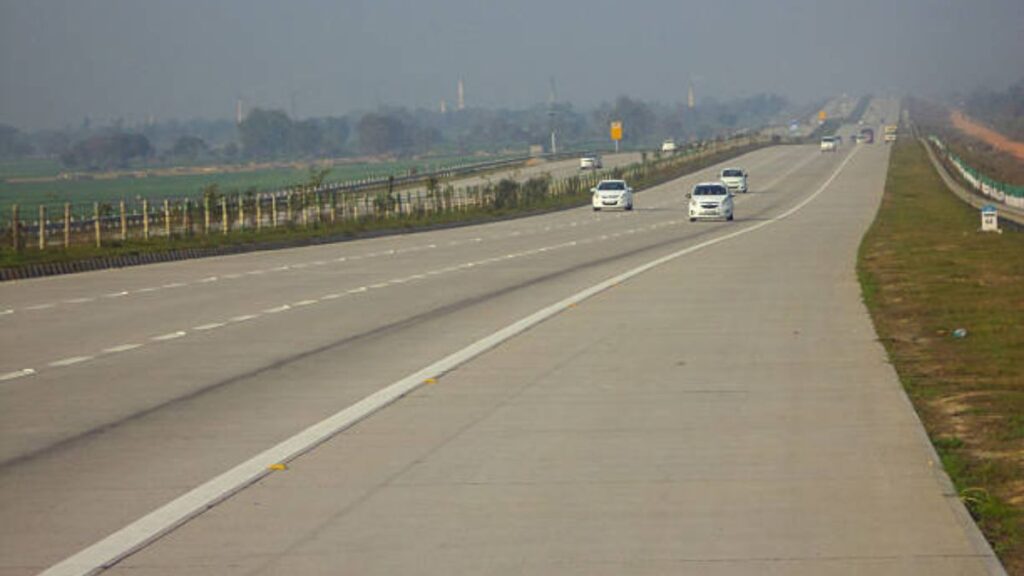Pune: Nitin Gadkari Announces New Highway to Cut Mumbai-Pune Travel Time to Just 1.5 Hours, Pune to Chhatrapati Sambhaji Nagar to 2 Hours

The project aims to cut traffic on the Mumbai-Pune Expressway by 50% and enhance regional economy. (Representational Image)
Pune, September 21, 2024: Union Minister for Road Transport and Highways, Nitin Gadkari, has announced a major infrastructure project aimed at transforming connectivity between Bengaluru, Mumbai, Pune, and Chhatrapati Sambhaji Nagar (formerly Aurangabad). The new 14-lane Mumbai-Bengaluru highway, once completed, will reduce the travel time between Pune and Mumbai to one and half hours and between Pune and Chhatrapati Sambhaji Nagar to just two hours via ring road. This project promises to improve regional connectivity while easing congestion on existing routes.
The ambitious highway will directly link Pune Bengaluru highway through a ring road to the Atal Setu, also known as the Mumbai Trans Harbour Link (MTHL). Construction is expected to begin within the next six months, and the highway is projected to reduce traffic on the existing Mumbai-Pune Expressway by up to 50%. The travel time between Mumbai and Pune will be just 1.5 hours on this new expressway.
The new highway will commence near the Atal Setu, India’s longest sea bridge, which connects Sewri in Mumbai to Navi Mumbai. From there, it will extend to Pune and further connect to Bengaluru through a ring road, providing a direct and faster route for commuters between these major cities. Gadkari emphasized the importance of this project during an event at the COEP University of Technology in Pune, where he was speaking on the birth anniversary of legendary Indian engineer Sir M. Visvesvaraya, celebrated as Engineers’ Day.

During his address, Gadkari noted the heavy congestion on the current Mumbai-Pune Expressway and stressed that the new 14-lane road will significantly alleviate the traffic burden. He highlighted the transformative potential of the project, stating, “A 14-lane road will be constructed near Atal Setu, leading to Pune through a ring road and then connecting to Bengaluru. This will reduce traffic on the Mumbai-Pune Expressway by 50 percent, improving travel times and easing the strain on existing infrastructure.”
Gadkari also stressed the importance of sustainability and innovation in India’s road construction projects. He noted that eight million tonnes of waste have already been repurposed for road building, showcasing the government’s commitment to environmentally conscious development. The new highway is part of the government’s broader vision to modernize India’s infrastructure while supporting regional growth and improving connectivity between major urban centers.
In addition to discussing the highway project, Gadkari emphasized the need to uplift rural communities to achieve India’s goal of self-reliance. He pointed out that 65% of India’s population still lives in rural areas, with agriculture being the primary source of income. According to Gadkari, advancements in research, technology, and infrastructure are crucial to improving rural economies and reducing migration to urban centers.
Gadkari’s vision for India’s future includes transitioning to electric vehicles, with the discovery of lithium reserves in Jammu and Kashmir set to play a key role. He also pointed to the country’s goal of becoming a global semiconductor hub within the next two years, positioning India as a leader in the technology and automotive sectors.
In conclusion, Gadkari reiterated that with strong leadership and proper funding, infrastructure projects such as this can be completed efficiently, benefiting communities across India. The new highway project is expected to not only reduce travel times but also foster economic growth, strengthen regional ties, and improve the overall quality of life for millions.







